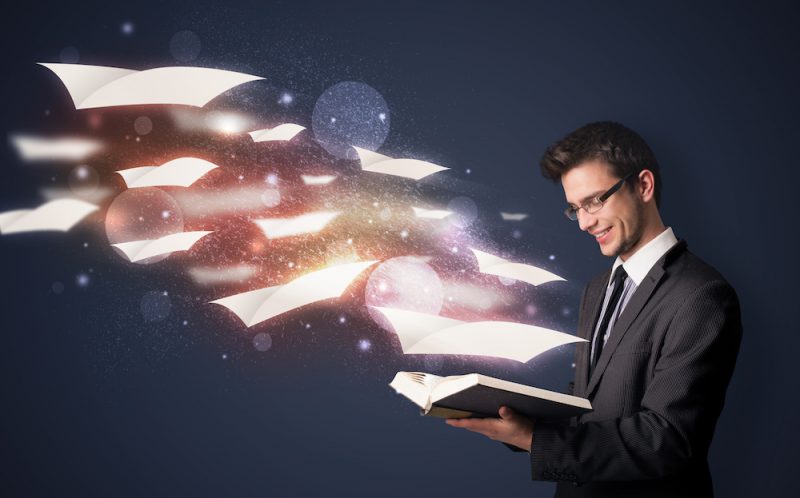Humans love a good story. From the dawn of time—think cave paintings and oral traditions—to the modern methods of seeing a movie or being absorbed by a good book, the power of stories captivates, motivates, and creates a strong bond between memory and content. After all, you could easily recite the plot of your favorite childhood book to a friend, but you might struggle to regurgitate that listicle you read online yesterday.
That’s because stories are about more than just plot and characters. Hearing a story actually, causes fundamental reactions in the brain that increase memory and even improve chances at changed behavior. At ELM, we know that storytelling is king, which is why we rely on its powers time and time again. Understanding how the brain reacts to a good story makes all the difference in telling a tale of chemical romance, active neurons, and learned empathy.
Coupled Up
Still looking for that special someone? You might strike out on the dating scene, but if you’re hearing a good story, your neurons are probably having better luck. That’s because, unbeknownst to you, your neurons react to the storyteller by mirroring the same patterns in the speaker’s brain. This creates a coherence between storyteller and listener that helps the latter better understand the point the former is making.
Take Me Away
Consider it a neurological getaway: A process known as “narrative transport” occurs when the brain hears or sees a story. It’s what lets you visualize the scenario that the storyteller creates. When you hear a story, you’re not at your desk; you’re at a party with Gatsby or on your way to the Emerald City. Even if the imagery isn’t as vivid as the type created by renowned novelists, narrative transport has the ability to help learners see beyond their four walls, which in turn creates a degree of empathy and experience.
If you want to know more about how we use stories at ELM, contact us here.
Chemical Romance
Here’s where some of the biggest changes occur in your brain: as you experience a story, the brain releases three chemicals. Oxytocin—the feel-good chemical—lights up the pleasure centers in your brain and causes you to have a positive reaction (not unlike the feeling of being in love). Norepinephrine, which is responsible for your body’s stress response, mobilizes you and poises you for action. Finally, stories cause the release of Dopamine, a neurotransmitter that controls your emotional response and motivation.
When combined together, these three reactions create a lusty cocktail of empathy, emotion, action, and pleasure that create a strong connection to the subject matter.
Start Me Up
A good story lights up a specific part of your brain; specifically, the prefrontal cortex and the amygdala. The prefrontal cortex is the control center of your brain. It’s mainly responsible for cognition and understanding. When engaged, you have a better chance at converting information to action. The amygdala houses some of your brain’s working memory. When listening to a story, it creates neurological connections between existing memories and new information for better recall.
The brain and storytelling are neurological soul mates. The reason stories have been a method of information relay for millennia is because they work. Conveying emotion; sharing information; increasing recall; it sounds like it’s the beginning of something beautiful.






